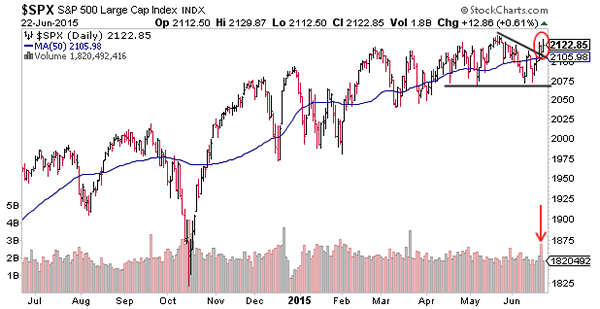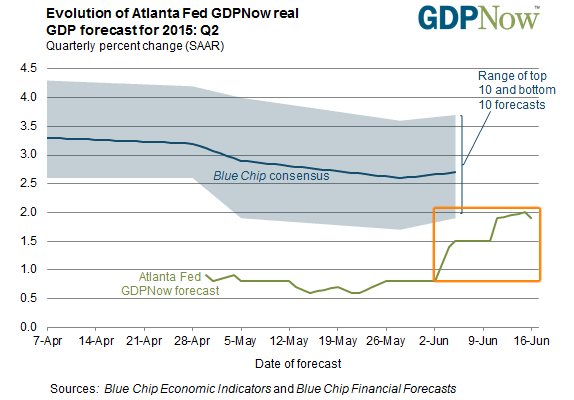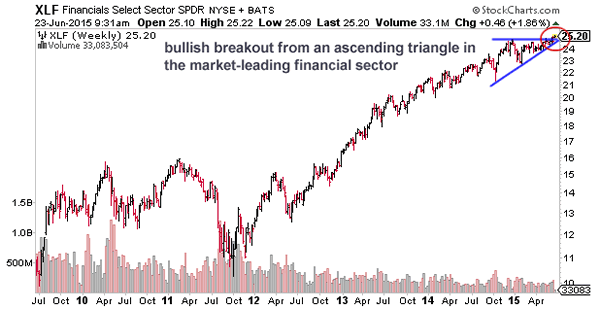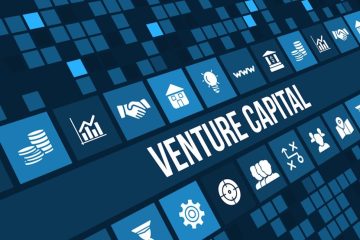The Indicator Wall Street Has Kept All to Itself… Until Now

European stock markets have come under heavy pressure over the slow-motion train wreck of Greece’s potential default.
All of the major European indices have dropped below their 50-day moving averages. The markets in France, Spain, Austria and Germany became so weak that they touched long-term support of their 200-day moving averages.
This pressure from across the pond weighed on U.S. markets with the S&P 500 briefly slipping below its 50-day moving average twice in the past two weeks.
Yet while things here at home looked wobbly, they didn’t break down. On Thursday, the S&P 500 saw a bullish break above a resistance line on heavy volume. On the chart I’ve also marked an important support level going back to April that has stopped four declines.

On the same day, the Nasdaq followed suit with an even sharper rally to a new high on heavy volume in what is known as a “follow-through day.” Coined by William O’Neill of Investor’s Business Daily, it is a sign of a new intermediate-term uptrend.
While not every follow-though day has led to a sustained rally — no indicator is perfect — no rally of significance has failed to produce one. It’s a very important bullish technical indicator that I’ve used successfully for 20 years as a trigger to add portfolio risk.
I believe the reason behind the bullishness in the U.S. markets lies partly in a relatively new fundamental indicator that is followed by a number of institutional investors, but few individuals know about.
It’s called GDPNow.
The name really says it all. The Atlanta Federal Reserve created this indicator as a live, real-time measure of U.S. gross domestic product (GDP) — the sum total monetary value of all goods and service produced in the United States.
GDPNow takes economic data releases, crunches the numbers in an algorithm and gives a real-time update on the health of the U.S. economy. It automatically updates itself five or six times a month as new economic data is released. As each new release becomes available, the GDPNow forecast evolves and becomes more accurate.
Now, forecasting the GDP in real time isn’t a new concept — private companies have been doing it for years — but now it’s being made publicly available to anyone. And it has a number of advantages over the current method of GDP calculation.
First, the official estimate is released with a delay. GDPNow, like the name implies, updates in real time.
There are also multiple revisions with the official estimate until the government posts a final number. This can sometimes lead to big swings from the initial estimate to the “conclusive” number. In contrast, GDPNow is not revised.
Lastly, GDPNow doesn’t rely on human judgment to alter forecasting. It has strict rules to follow, and it sticks to those rules.
GDPNow gained some notoriety in late April when GDP growth for the first quarter was announced. In the run-up to the announcement, there was a major difference between the Wall Street consensus forecast, which predicted growth of 1%, and GDPNow, which was forecasting only 0.1% growth. At the end of April, first-quarter GDP growth was reported at 0.2%, well below the Wall Street estimate, but GDPNow nearly hit it on the nose.
Now let me show you its bullish projection for Q2. In June, following data releases on retail sales and motor vehicle sales, GDPNow surged higher, highlighted by the orange box below.

(Note: The Blue Chip consensus is a proprietary forecast from Aspen Publishers. Aspen surveys the leading U.S. business economists and catalogs their predictions. GDPNow offers it as a comparison.)
This is clearly bullish for the U.S. stock market given the sharp improvement in its underlying economic conditions.
Large institutional investors are viewing it the same way. As I mentioned above, the S&P 500 found key support while the Nasdaq surged to a new high and generated a follow-through day.
If GDPNow were to drop back below 1, I would consider it an indication that trouble is brewing. But for now, the United States has its groove back.
And one area that looks particularly bullish at the moment is the financials. This sector has always been watched as a market-leading group — both up and down. When financials shift their direction, the broader market will generally be close behind.
Currently, we’re seeing a positive trend in the financial sector, which has shown clear strength during June despite Greece-related jitters. In fact, the Financial Select Sector SPDR Fund (NYSE: XLF) bullishly broke out of an ascending triangle and is making new seven-year highs.

In addition to playing the bullish upside in XLF, traders should look for individual names in the sector.
I was recently alerted to a buy signal in a little-known financial stock. Over the past four quarters, year-over-year earnings growth has climbed from 35% to an amazing 252% while year-over-year revenue growth has consistently stayed above 20%. And its return on equity (ROE) is three times the industry average.
An investing guru with an outstanding long-term record of success added more than 1.6 million shares of this stock to his portfolio during the first quarter. And on the chart, a long-term base breakout of a saucer pattern forecasts a rally of more than 35%.
What sealed the deal for me, though, was a buy signal from another indicator. Of the 3,983 stocks in my database, this one ranked in the top fifth percentile based on this metric. If you’re interested in learning more about it or getting the name of my favorite financial stock to buy, follow this link.










